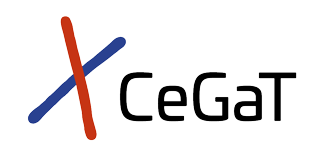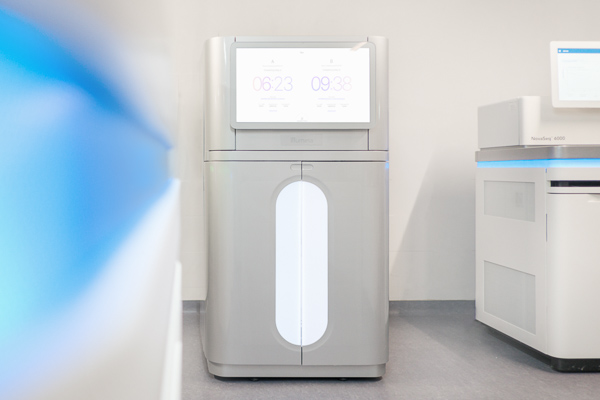Located on the surface of T-cells, the T-cell receptor (TCR) is relevant for recognizing antigens presented by the major histocompatibility complex (MHC) molecules on antigen-presenting cells. Through somatic rearrangements, T-cells express a broad range of unique receptors. These highly diverse heterodimers are mostly composed of two subunits, the α and β chains, and a minor percentage of the γ and the δ chains. The TCR α and γ chains are generated by V/J recombination, which arise from random rearrangements of the variable (V) and joining (J) genes. The β and δ chains are generated by V/J/D recombination, which additionally include diversity (D) genes.
Thus, the individual TCR repertoire is shaped by V/J/D recombination. This recombination results in an extremely diverse complementary-determining region 3 (CDR3). This region is an attractive target to assess the overall TCR repertoire diversity, given that it is thought to be unique to each TCR-β variant.
Investigation of the TCR repertoire can:
- provide insights into functions of T-cells in immune response, e.g., immunosuppression.
- enable monitoring drug therapies, such as immunotherapies in cancer and the related change in T-cell status.
- improve personalized medicine by tumor-infiltrating T-cell analysis.
We offer TCR Sequencing to investigate the T-cell receptor repertoire. We provide information about diversity, clonality, and changes in the TCR repertoire or single TCR clones (TCR clone tracking) for different time points.
CeGaT Is the Best Partner for Sequencing Your Project
Our Commitment to You
Fast Processing
Turnaround time
≤ 15 business days
High Quality
Highest accuracy for all processes
Secure Delivery
Secure provision of sequenced data via in-house servers
Safe Storage
Safe storage of samples and data after project completion
Our Service
We provide a comprehensive and first-class project support – from selecting the appropriate product to evaluating the data. Each project is supervised by a committed scientist. You will have a contact person throughout the whole project.
Our service includes:
- detailed project consulting
- product selection tailored to your project
- detailed bioinformatic evaluation of your data
- detailed project report with information about sample quality, sequencing parameters, bioinformatic analysis, and results
Benefit from our dedicated support and accredited workflows.
Explore Our Product for T-Cell Receptor Sequencing
We offer T-Cell Receptor Sequencing (TCR) on RNA level to address a variety of research questions. Would you like to have bioinformatic analyses performed on your data in addition to the included deliverables? Each of our products can be supplemented with further services. We are happy to advise you.
TCR RNA |
Species |
Sample type |
Target |
Target chain |
Sequencing platform |
Output |
Included deliverables |
Bioinformatics
Raw sequencing data are automatically processed. We offer different levels of bioinformatic analysis. The default level is Level 1. With increasing bioinformatic level, more data are delivered. All higher levels include the data from the lower levels. In addition to the data, and independent of the analysis level, a project report is generated.
Level 1:
- demultiplexing and adapter trimming of the sequencing data (FASTQ format)
Level 2:
- reconstruction of TCR clones
- clonality and diversity estimation (TSV & PNG format)
Further options for bioinformatic analyses are available on request such as:
- clone tracking
- repertoire changes across different time points
Technical Information
We offer T-cell receptor sequencing of the CD3 region of the TCR β chain. TCR RNA enables the detection of expression levels of the repertoire.
At CeGaT, paired-end sequencing (2 x 100 bp) is performed using the Illumina sequencing platforms. If you require other sequencing parameters, please let us know! We can provide further solutions.
Further Information about T-Cell Receptor Sequencing
The T-cell receptor was first isolated in the 1980s using monoclonal antibodies. Since then, its function in the human body is investigated. The T-cell receptor is a heterodimeric protein complex consisting of an α and a β chain. These two chains are connected via a disulfide and form an antigen binding site in the extracellular space. In addition to the α and β chain, the variable region (V- region), the constant region (C-region), the transmembrane protein CD3, and two ζ-polypeptides (Zeta) form the final T-cell receptor complex. Only approximately 5% of all human T-cell receptors do not consist of an α and a β chain, but a γ and a δ chain.
The loci that code for the α and β chain of the T-cell receptor are located on chromosomes 14 and 7, respectively. Each chain is encoded by loci that contain several gene segments: V and J for the α chain and V, D, and J for the β chain. Each gene segment is available in diverse versions. During the somatic recombination, the segments are randomly chosen and combined. During the recombination step, bases can be added or deleted, increasing the diversity even more. Each mature T-cell has exactly one recombined α and β chain.
Both chains are independently transcribed and translated. Subsequently, they are connected to form a complete T-cell receptor. The variable region that originates from somatic recombination is directly involved in the antigen binding.
The entirety of all T-cell receptors in a sample is also known as T-cell receptor repertoire. Analyzing this T-cell repertoire has a wide range of implications and applications. T-cell receptor sequencing can increase the understanding of various diseases, such as cancer, infectious diseases, and autoimmune diseases, or aging processes. Sequencing the T-cell receptor repertoire can provide insights into the function of T-cells, for example in the context of immunosuppression. Additionally, T-cell receptor sequencing can be used to monitor drug therapies, for example in the context of cancer. Cancer treatment, such as immunotherapies, and related changes in the T-cell receptor status are one application example for T-cell receptor sequencing mediated monitoring of drug therapies. Furthermore, personalized medicine approaches are facilitated using T-cell receptor sequencing.
Downloads
Contact Us
Do you have a question or are you interested in our service? Feel free to contact us. We will take care of your request as soon as possible.
Start Your Project with Us
We are happy to discuss sequencing options and to find a solution specifically tailored to your clinical study or research project.
When getting in contact, please specify sample information including starting material, number of samples, preferred library preparation option, preferred sequencing depth and required bioinformatic analysis level, if possible.






